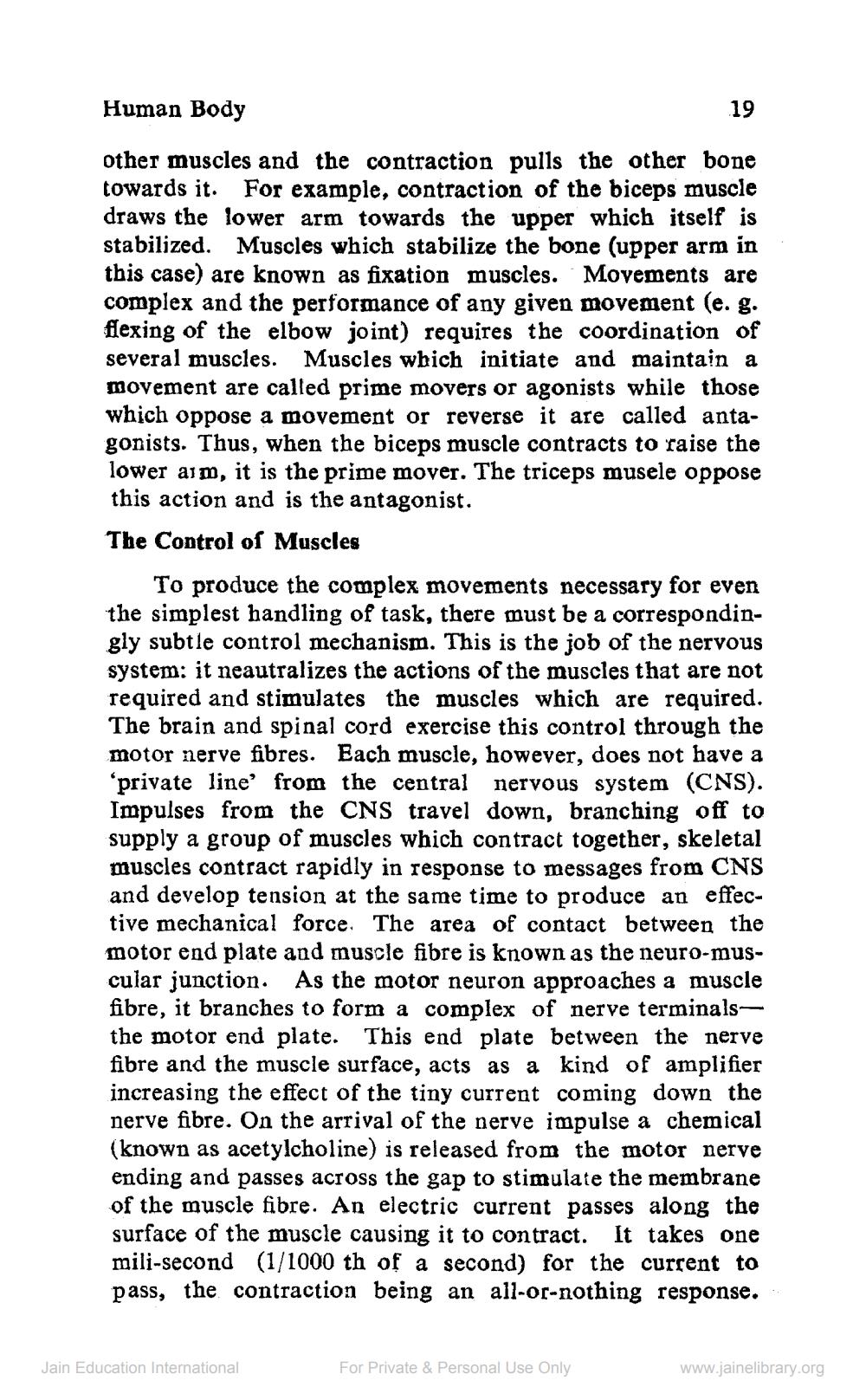________________
Human Body
19
other muscles and the contraction pulls the other bone towards it. For example, contraction of the biceps muscle draws the lower arm towards the upper which itself is stabilized. Muscles which stabilize the bone (upper arm in this case) are known as fixation muscles. Movements are complex and the performance of any given movement (e. g. flexing of the elbow joint) requires the coordination of several muscles. Muscles wbich initiate and maintain a movement are called prime movers or agonists while those which oppose a movement or reverse it are called antagonists. Thus, when the biceps muscle contracts to raise the lower aim, it is the prime mover. The triceps musele oppose this action and is the antagonist.
The Control of Muscles
To produce the complex movements necessary for even the simplest handling of task, there must be a correspondingly subtle control mechanism. This is the job of the nervous system: it neautralizes the actions of the muscles that are not required and stimulates the muscles which are required. The brain and spinal cord exercise this control through the motor nerve fibres. Each muscle, however, does not have a 'private line' from the central nervous system (CNS). Impulses from the CNS travel down, branching off to supply a group of muscles which contract together, skeletal muscles contract rapidly in response to messages from CNS and develop tension at the same time to produce an effective mechanical force. The area of contact between the motor end plate and muscle fibre is known as the neuro-muscular junction. As the motor neuron approaches a muscle fibre, it branches to form a complex of nerve terminalsthe motor end plate. This end plate between the nerve fibre and the muscle surface, acts as a kind of amplifier increasing the effect of the tiny current coming down the nerve fibre. On the arrival of the nerve impulse a chemical (known as acetylcholine) is released from the motor nerve ending and passes across the gap to stimulate the membrane of the muscle fibre. An electric current passes along the surface of the muscle causing it to contract. It takes one mili-second (1/1000 th of a second) for the current to pass, the contraction being an all-or-nothing response.
Jain Education International
For Private & Personal Use Only
www.jainelibrary.org




